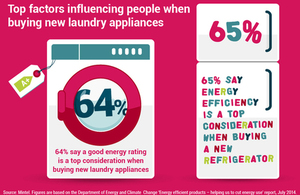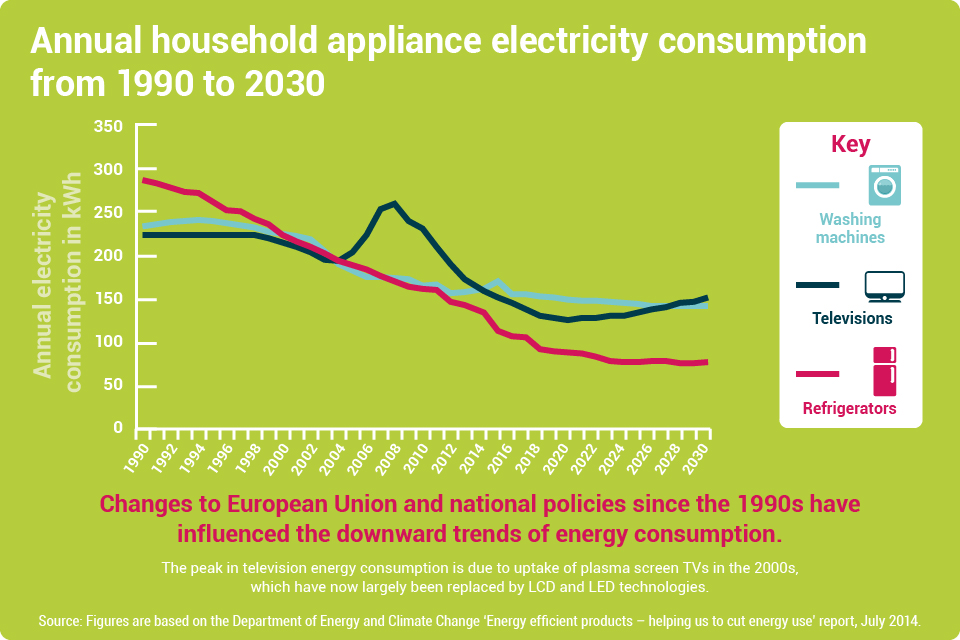Dramatic fall in cost of running household goods
Energy efficient household appliances lead to drop in electricity consumption.

Watching TV, washing your clothes and even turning on the lights is now cheaper than it was ten years ago. Research published today by the Department of Energy and Climate Change shows the cost of running household appliances has tumbled and, in some cases, halved due to tougher minimum performance standards which have led to more and more energy efficient products dominating the market.

The findings also show that an appliance’s energy rating is the most important factor for consumers when choosing a new fridge or washing machine. In addition, households could spend 80% less if they used LEDs rather than traditional bulbs over the course of the LED bulb’s lifespan. This includes the cost of purchasing traditional light bulbs over five and half years, which would be about £135, compared to a single LED that will last the same amount of time and cost only around £9.30.
The report was published alongside the Household Electricity Survey which showed that as more and more households save energy through better appliances, there is the potential to save around 13% of the UK’s total residential electricity consumption – equivalent to two large power stations.
The report also showed that, in just three years, the sales of energy efficient refrigerators, washing machines and televisions increased by around 18% on average.
Energy and Climate Change Secretary Edward Davey said:
“Making everyday appliances more energy efficient has helped to keep more money in the pockets of consumers – without people having to do a thing.
“Newer, less power-hungry appliances are coming out all the time thanks to better product standards and improving technology – which means running costs are going to keep falling, saving people even more money.”
The report looked at the impact of energy efficiency standards and labels for refrigerators, washing machines, televisions, and light bulbs and found:
- An average refrigerator bought in 2013 would cost half the amount to run over the course of its lifetime compared to one bought in 2000.
- A new washing machine in 2013 would use 28 kilowatt hours of electricity less each year than the most energy efficient model from 2000 – enough to boil around 150 kettles.
- A new television from 2005 would eat up £40 more energy in its lifetime than a television of an equivalent model from 2013.
- If switched on constantly, a single LED bulb lasts around five and half years – that’s 50 times longer than a traditional light bulb, which lasts only about 42 days.

A typical family will upgrade its fridge and washing machine every 12 and a half years. Thanks to higher product standards, households are naturally buying more efficient products every time they upgrade their appliances. This means that a typical family would have paid around £25 less in electricity costs to run their fridge and washing machine last year compared to what they would have paid at the turn of the century. And, with the price of appliances becoming cheaper and cheaper, buying these products in 2013 would have cost households around £250 less than if they purchased equivalent models in 2000 or 2001.
The report, “Energy efficient products – helping us cut energy use” focused on European-wide standards aimed at making household appliances more energy efficient and removing the least efficient products from the market. Energy labels indicate relative performance in terms of efficiency, steering consumers towards the most efficient models. The Household Electricity Survey focuses on how electrical appliances are used in homes and identifies what consumers can do to help to reduce energy consumption.